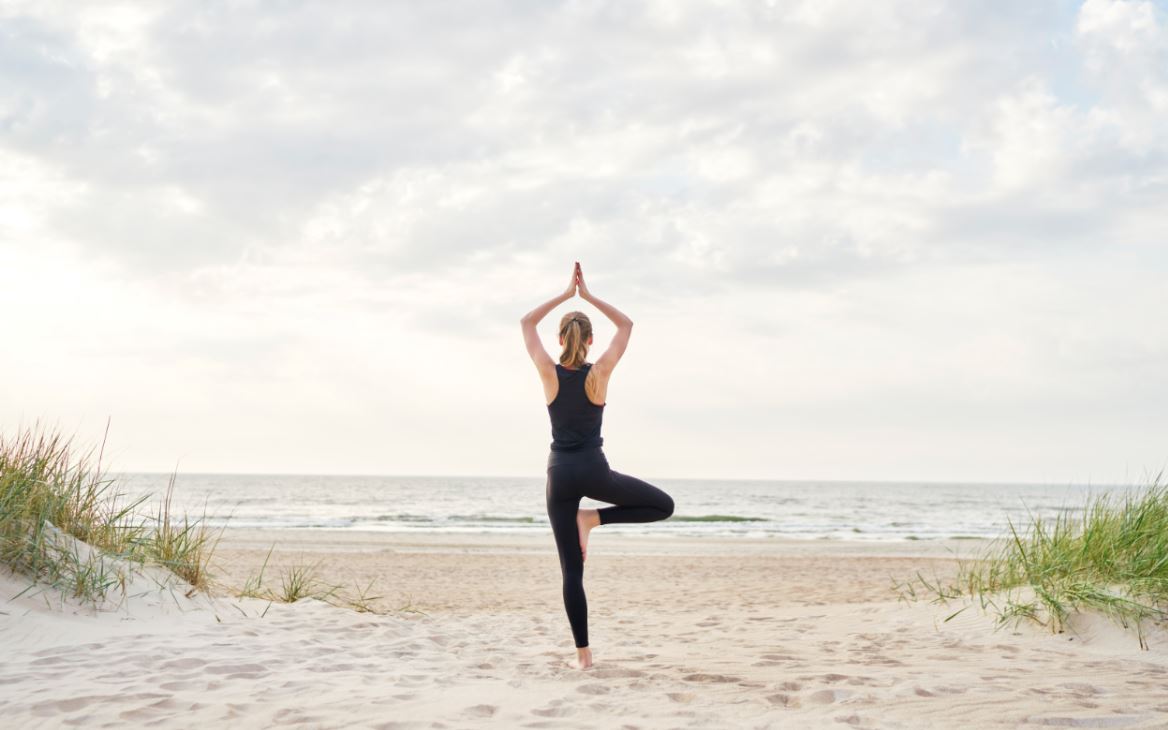Yoga Ashtanga guide for beginners
What is Ashtanga Yoga? When you look at the proposal in terms of yoga classes, it is easy to get lost with all the terms that appear. Each one of them represents a particular discipline that will allow you to derive different benefits from it. To help you find your way around, here is some essential information to know about Ashtanga yoga which invites you, among other things, to find a feeling of well-being.
The origins of Ashtanga yoga
As with all other forms of yoga, Ashtanga originates in India. Like Vinyasa, this form was initiated by Patthabi Jois.
Ashtanga Vinyasa Yoga is often referred to as Ashtanga Vinyasa Yoga. Over the years, the practice of this discipline has spread to the four corners of the world and it has won the hearts of a good number of Westerners who take advantage of it to be part of a dynamic of well-being.
What is Ashtanga yoga: definition
Concretely, Ashtanga yoga will be considered as a dynamic yoga that uses the sequence of different postures.
Each of its series will have its own structure in order to derive maximum benefits. The series used must be followed in a specific order and the more you progress through the series, the higher the level required.
Within Ashtanga yoga, we find sun salutations, standing postures, sitting postures, back bends or a concept called savasana.
Breathing will also be of key importance as it will help us determine the rhythm of our movements.
Concretely, each breath will lead to the beginning of one movement or the end of another. This breathing will also be an essential element to allow us to stay focused during this yoga session.
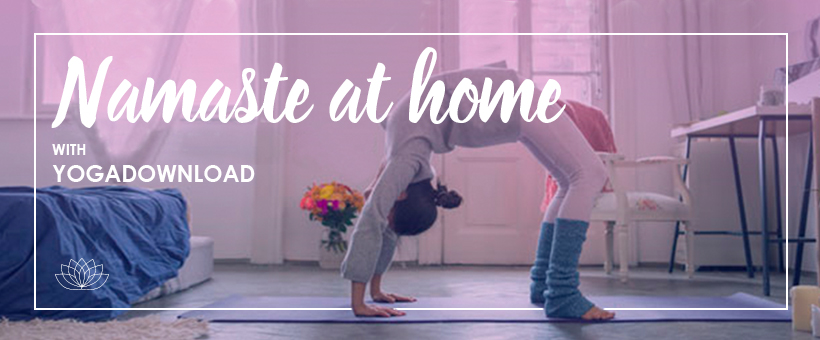
Ashtanga Yoga : the main characteristics
Unlike other forms of yoga that will put relaxation at the center of the exercises, Ashtanga yoga will be a truly dynamic practice that requires the use of muscles and endurance.
Generally speaking, it should be practiced every day, as well as early in the morning, in order to derive maximum benefit.
Generally, sessions are held six days a week. It is considered that practicing in the morning allows our mind to be undisturbed by all the hassles of our daily life. The main difference with Vinyasa yoga, which is similar in many ways, is that the series will be followed according to a pre-established pattern that will never deviate.
Ashtanga yoga : 5 essential postures
1 - The posture of the triangle - Trikonâsana
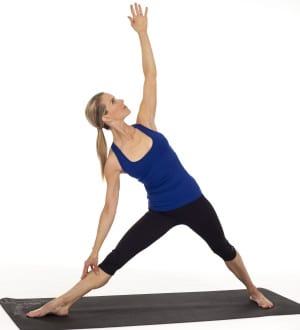
The triangle posture, which is known to fight back pain, is very important in Ashtanga yoga.
First of all, to prepare it well, a little warm-up is usually required to open your waist and improve your flexibility.
To set up this posture, you will be asked to put yourself in the mountain position with your feet together. Afterwards, you will have to exhale with your feet about 1.50 m apart.
Then, you will have to tuck the tip of your left foot in a little to the right and turn your other foot 90° outward. Throughout this position, your hips should remain in front. Once this is done, you can exhale while stretching your pelvis and torso to the right, as well as sliding your right hand along your leg. Afterwards, stretch your other arm vertically.
2 - The posture of the warrior - Virabhadrâsana
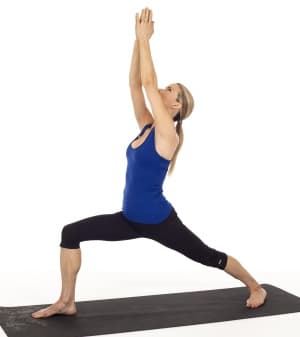
This position is one of Ashtanga's must-haves. To put it in place, you will have to adopt the posture of the mountain.
This consists of standing up and keeping your feet and heels together. You will have to put your hands on your hips, then spread your legs about ten centimeters apart. Afterwards, you will have to take a big step forward with your right foot in order to put a distance of about 1 m between your feet.
Your leg will have to make a right angle and you will have to retract your coccyx. At the moment of inspiration, you will raise your right arm above your head, then you will join your hands palm to palm.
When exhaling, you will have to lower your pelvis and bend your right leg to form a right angle. Then you will have to turn your left foot outward and stretch your leg.
Afterwards, you will stretch your spine by putting your arms up, while making sure to keep a good pressure with your hands placed against each other.
3 - The posture of the candle - Salamba Sarvangasana
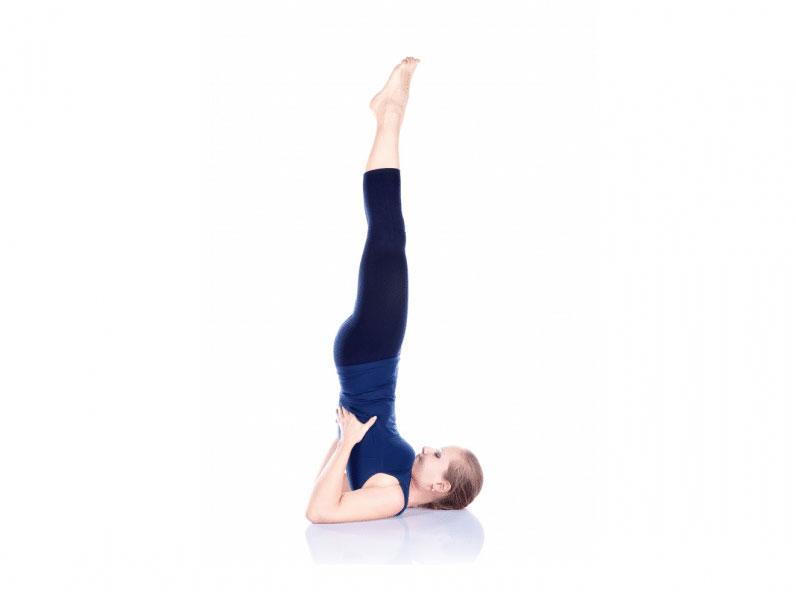
In the list of the essential positions of this yoga, we find the candle posture.
To achieve this, you will have to lie down on your yoga mat with your back flat. You will then have to join your legs together and lift them vertically, keeping your feet together and your legs straight.
Once your legs are in the air, you can place your hands under your back and lift your buttocks off the floor. Your feet and legs should remain vertical throughout the posture. Note that your legs should not tilt backwards.
4 - The posture of the boat - Paripurna-navâsana
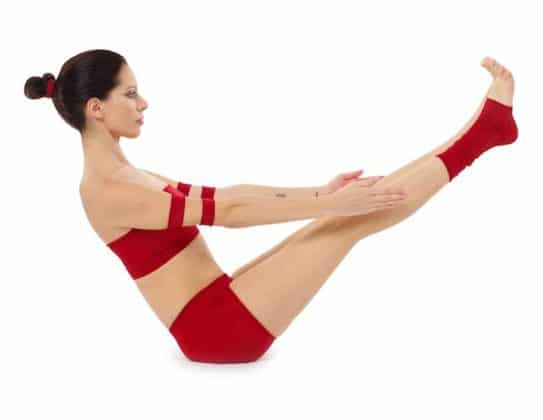
The posture of the boat starts by sitting on these pins. You have to be careful to distribute your weight evenly between your two buttocks.
Your thighs, knees, ankles and feet should touch each other. Then, you will have to place your palms on the floor, at the level of your hips, and put your fingers forward. Place your chin on your sternum and open your shoulders.
Next, you will have to straighten your body, stretch your arms vertically above your head, then breathe in deeply, all the while opening your rib cage.
5 - The posture of the turtle - Kurmâsana
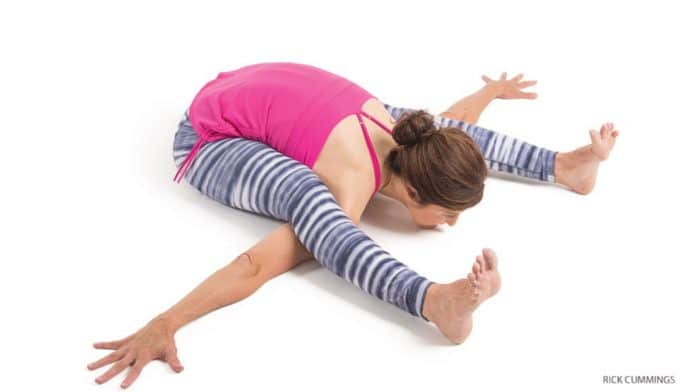
For the turtle's posture, you will also have to sit on the ground and bend your legs in front of you.
The knees should be open and the soles of the feet should be against each other. During this posture, your hands will be brought to grab your ankles, while pushing the ground with your buttocks to tilt your pelvis forward and stretch your back. Then you will have to slide your wrists under your ankles and lower your elbows to the ground.
What are the benefits of Ashtanga yoga?
1 - On the physical level
From a physical point of view, Ashtanga yoga allows to develop different points such as strength, flexibility and balance. By practicing regularly, you will then be able to see that you will benefit from a better endurance and an increased breathing capacity. It is also considered that this yoga helps to eliminate toxins from our body through a dynamic sequence of positions.
2 - On the mental level
Practicing Ashtanga yoga also means putting all the chances on one's side to develop one's ability to concentrate. In fact, during a session, you will have to concentrate considerably to perform the different series of postures. As a result, your mind will be trained to focus on the present moment and not be overwhelmed by external elements or omnipresent thoughts.
3 - On the emotional level
Like other yogas that can be found, this discipline can be an excellent ally in the management of stress or anxiety. People who take advantage of it can notice that they are much less stressed in their daily lives and that they are better able to cope with anxiety-provoking situations. Ashtanga yoga is also generally considered to promote a good quality of sleep.
Who is Ashtanga Yoga for?
Regardless of age, it is possible to practice Ashtanga yoga. However, it is important to keep in mind that the particularly physical side of this discipline requires good condition. Concretely, if you are not a sports enthusiast, you should turn to another yoga to start.
Conversely, if you're used to putting your body to the test, you can turn to beginner's classes. Although Ashtanga is a fairly physical discipline, it is still within the reach of many people. In order to reap the maximum benefits, you will need to follow these sessions assiduously, even if you suffer from some aches and pains.
In the end, this will allow you to have a total awareness of your own body and its capacities.

How does an Ashtanga yoga session take place?
As we mentioned earlier, Ashtanga yoga consists of repetitive series of well-defined movements.
Depending on the studio you go to, the way of doing it may change, but there are still some great similarities. Usually, it starts with a few moments of meditation which are essential for a good relaxation.
Afterwards, participants will be led to do what is called sun salutations. The purpose of these greetings is to warm up the body while getting rid of impurities, both physical and mental. Another moment will be dedicated to stretching to properly prepare our body.
Afterwards, the series begins and aims to restore our body to good health and prepare us for future series. In the latter, we find forward bending, simple twisting or even pelvis opening devices. Afterwards, the participants will be led to perform back bends, then a sequence of several postures that allow our body to return to a state of calm.
Finally, the session ends with a savasana which translates into a moment of relaxation with the aim of evacuating all the muscular tensions that could have been assimilated during the session.
Ashtanga yoga: the most frequently asked questions
How to find a studio near you?
In order to be able to practice Ashtanga yoga properly, you will need to find a suitable studio close to your home. To do so, you can turn to places that specialize in yoga.
Some gyms also offer this kind of class. Don't hesitate to inquire about the different studios in order to find the one that suits you best. As a beginner, it is still advisable to turn to the side of the class according to your level.
If you don't know which studios to go to, don't hesitate to ask around or to do some research on the internet. This will allow you to have objective advice on the Ashtanga yoga classes that are offered.
Ashtanga or Hatha Yoga?
As we mentioned earlier, Ashtanga yoga is not an easy discipline and you will have to be ready to use your muscles and your physical capacity in general. Therefore, it is not necessarily the best choice for you. If you want to start with something softer, which will train you in a dynamic of well-being, you should start with Hatha yoga. It will help you to familiarize yourself with yoga in general, while preparing your body for more advanced disciplines such as Ashtanga or Vinyasa.
What equipment do I need to practice Ashtanga yoga?
To be able to practice Ashtanga yoga effectively, it is essential to have a suitable outfit. For this, you can take a closer look at the proposal made for yoga clothing.
Since it is a dynamic discipline, it is recommended to turn to comfortable clothing that allows you complete freedom of movement.
If you go to a group class, yoga mats will be provided. However, yoga enthusiasts do not hesitate to buy their own mat that they can bring to each session. Finally, in order to be able to realize certain postures, it is possible to use straps or bricks. Here again, it is likely that your studio is already equipped with them. The purchase of such equipment will only be recommended if you plan to practice Ashtanga yoga directly at home.

To go further
If you want to know more about Ashtanga yoga and the different possibilities it offers to its practitioners, you can take a closer look at the different books that deal with this subject. You will undoubtedly find there all the answers to your questions in order to put all the chances on your side to register in a dynamics of well-being and to benefit from a found serenity.
Ashtanga yoga is a practice that seduces more and more people, especially in the West. If you have already had the opportunity to participate in sessions of this dynamic yoga, do not hesitate to tell us a little more in the comments so that others can benefit from your experience.


